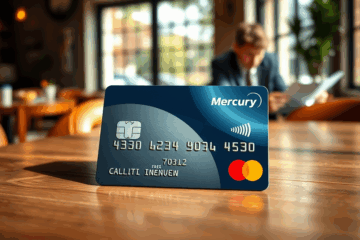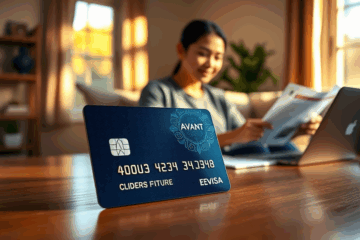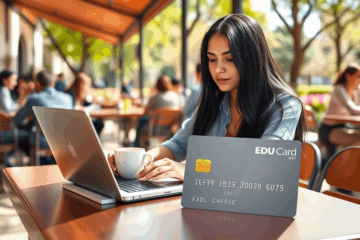Understanding Virtual Credit Cards and How They Work
Virtual Credit cards are revolutionizing the way we make online transactions by providing a secure alternative to traditional credit cards.
In this article, we will explore the concept of virtual credit cards, their digital representation, and the key components that make them an attractive option for consumers.
We will also delve into the enhanced security features that protect users from fraud, the benefits of temporary and one-time use, and how these digital cards link to existing credit card accounts for seamless online purchases.
Join us as we uncover the advantages of embracing virtual credit cards in today’s digital landscape.
Understanding Virtual Credit Cards
Virtual credit cards have emerged as the digital counterparts of traditional plastic cards, providing a secure layer for online transactions.
Functioning exactly like their physical predecessors, these virtual cards feature a unique 16-digit number, expiration date, and CVV code but exist only in electronic form.
The key security advantage of virtual credit cards lies in their ability to shield your primary credit card information during online purchases.
This security measure makes them highly attractive for consumers wary of fraud, particularly in scenarios involving subscription services or single-use purchases.
This minimizes the risk of unauthorized access to your main credit account by using disposable card numbers.
The rise in the popularity of virtual credit cards can also be attributed to their enhanced convenience and flexibility.
They are especially beneficial for managing expenses and controlling spending, as users can generate a new virtual card number for each transaction if needed.
This capability makes them uniquely suited for online shopping—where consumers increasingly look for measures to protect their data amid rising cyber threats.
As digital-payment adoption continues to grow exponentially, virtual cards provide a tailored, contemporary solution.
“The ‘cash to consumer’ model will drive adoption of virtual cards”, highlighting their potential influence in reshaping transactional habits.
As a result, businesses and individual consumers alike are gravitating towards these digital tools, making virtual credit cards an indispensable asset in modern financial transactions.
Practical Use and Mechanics of Virtual Credit Cards
Virtual credit cards offer a modern solution for safe online transactions by providing a unique card number linked to an existing credit account.
The process begins with the creation of a virtual card, which can be tailored for temporary or one-time use, increasing security during online purchases.
As we explore the features and transaction flow of these digital tools, we will discover how they enhance the shopping experience while protecting sensitive information.
Key Features That Enhance Security and Control
Virtual credit cards offer a range of security-focused features that significantly enhance user protection and control over finances.
One of these key attributes is the use of temporary numbers, providing a unique, disposable number for each transaction.
This not only shields your primary account from exposure but also reduces the risk of unauthorized usage.
Additionally, virtual credit cards incorporate spending caps, allowing users to set maximum limits for each transaction.
By controlling spending, users gain greater financial management and further safeguard against fraudulent activities.
Consequently, the ability to easily cancel or deactivate a virtual card adds another layer of security.
Should any suspicious activity be detected, users can promptly shut down the virtual card without affecting the main account, minimizing potential damages.
The combination of these features significantly mitigates risks associated with online purchases and account management.
Explore virtual credit cards for more information.
- Temporary numbers that expire after use.
- Customizable spending limits for each purchase.
- Instant cancellation to prevent misuse.
- Encrypted transactions for added security.
- Enhanced anonymity during online shopping.
Step-by-Step Transaction Flow
To initiate a virtual card purchase, users first request a virtual card from their bank’s website or app.
They provide the necessary details, and upon verification, a randomly generated 16-digit card number is issued and linked to the main account, ensuring enhanced security.
This process leverages digital technology to mask the actual card information while still facilitating seamless transactions.
| Step | Action |
|---|---|
| 1 | Request a virtual card through the bank’s app or site. |
| 2 | The bank issues a unique card number linked to the main account. |
| 3 | Make a secure purchase online using the virtual card details. |
| 4 | The issuer authorizes the transaction without revealing the actual card number. |
After obtaining the card, users can make purchases online by entering the virtual card number, expiration date, and CVV.
This data provides a layer of security because the real card details are never exposed.
The merchant processes the payment, sending it to the issuer for authorization.
This authorization confirms the account has sufficient funds and secures the transaction by only recognizing the virtual number.
This method offered by platforms like Mastercard ensures that both users and businesses experience reduced fraud risks, as outlined in detailed guides like “Virtual Cards Explained” on Corpay.
Virtual Credit cards offer a modern solution for secure online shopping, ensuring protection for your primary card information.
With their unique attributes and benefits, they represent a significant advancement in payment technology that consumers should consider.



0 Comments